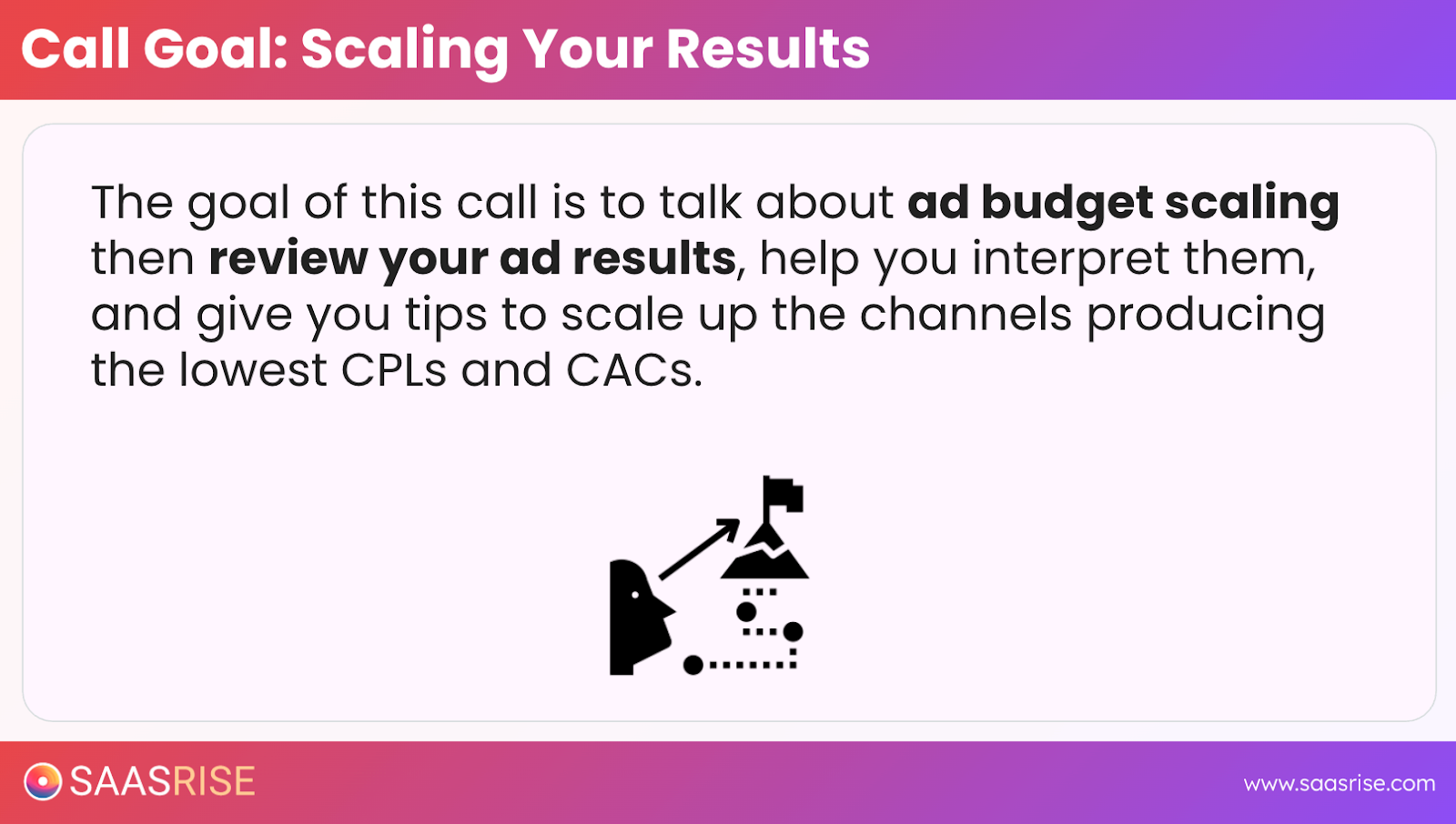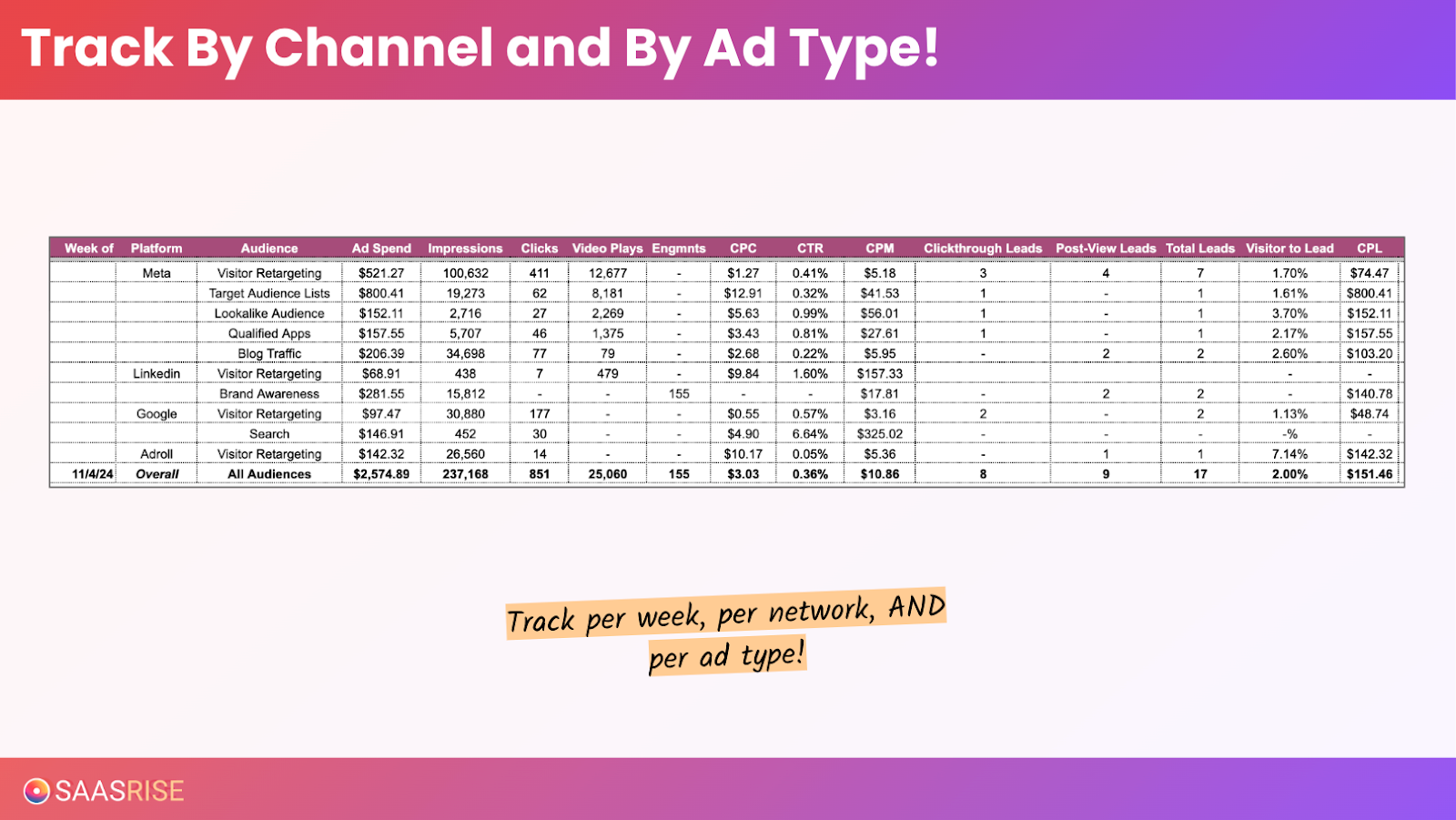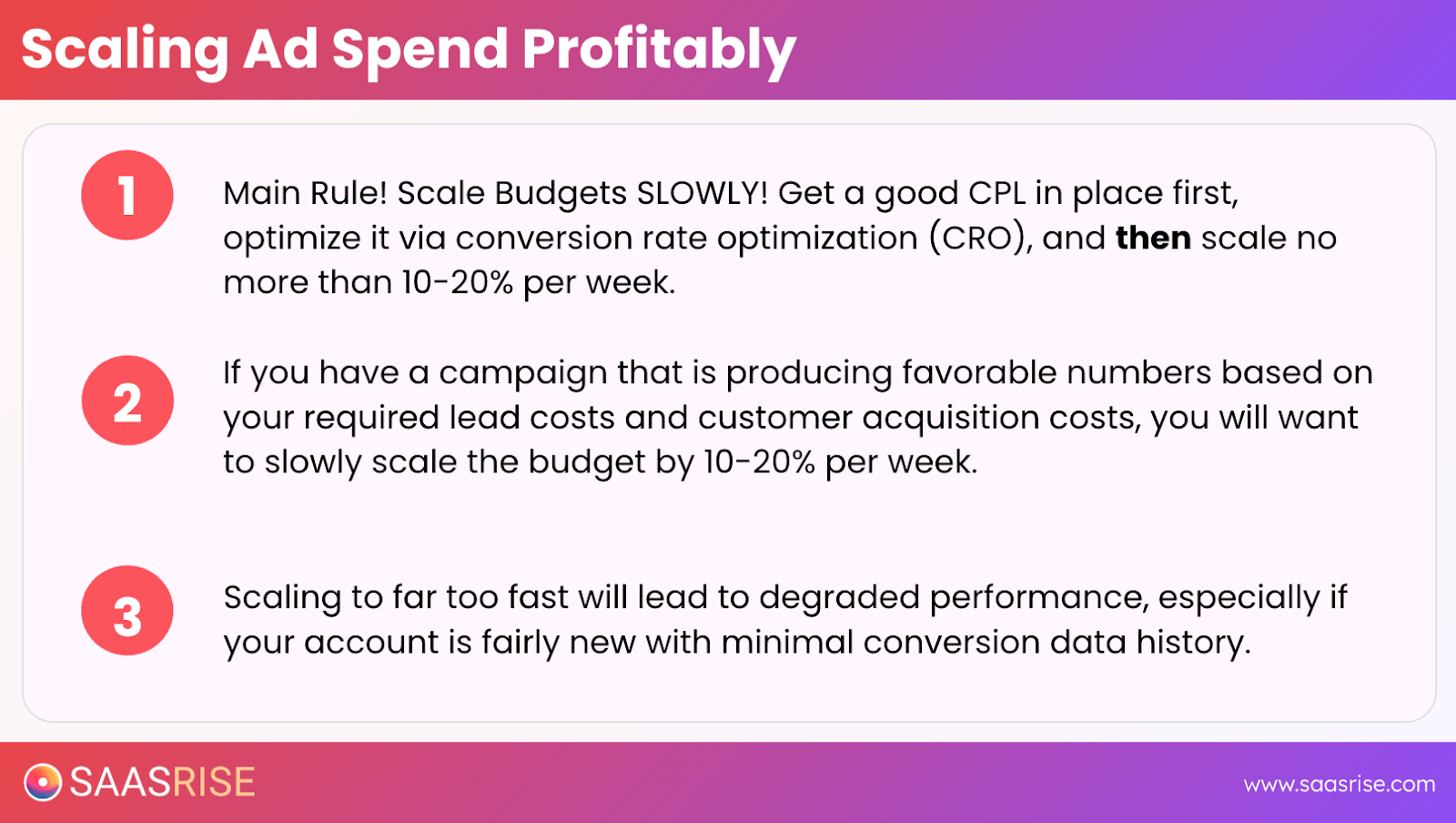
How to Scale Your Ad Budget Without Breaking Your Funnel
Explore how to grow ad spend 10–20% per week without breaking performance. You’ll learn when to scale, how to reallocate budgets by channel, refresh creatives, and use attribution tools to maintain profitable CPL and CAC as you push toward multi-channel omnipresence.
Launching ads is easy. Scaling them profitably — that’s the real challenge.
In SaaS, there’s a huge difference between running ads and scaling an ad system.
You can get your outbound, content, and ads all running, but until you know how to increase budgets without destroying performance, your growth will always hit a ceiling.
That’s where ad budget scaling comes in — the process of systematically increasing your ad spend while maintaining (or improving) your CPL (Cost Per Lead) and CAC (Customer Acquisition Cost).
This is the moment in the B2B SaaS Growth System where everything comes together: data, creative, and patience.
Here’s how to scale ads the right way — without resetting algorithms, tanking ROI, or wasting budget.
This content is from the 16 week B2B SaaS Growth Program that we run twice a year.

Step 1: Understand Where You Are in the Growth Curve
Before you scale, you need to know if you’re ready.
Most SaaS companies start with what we call a test month — a period of running ads across multiple platforms (Meta, LinkedIn, Google, Bing, AdRoll) to gather baseline data.
Your goal in the test phase isn’t to generate tons of leads. It’s to buy information — insight into what works, what doesn’t, and which channels show potential.
After 30–45 days, you should know your baseline numbers:
- CPC (Cost per Click)
- CTR (Click-Through Rate)
- CPL (Cost per Lead) per channel
- Qualified Lead Rate
- Estimated CAC
That data gives you the clarity to know which channels can scale and which should be optimized or paused.
Remember: the goal isn’t to make every channel work — it’s to find and scale the few that do.
Step 2: Track Everything — Weekly
If you’re not tracking, you’re guessing.
Every week, you should be filling out your ad results tracking sheet (the one we provide in the program) and reviewing performance across every network and campaign type.
Track:
- Impressions
- Clicks
- CTR
- CPL
- Cost per Qualified Lead (CPQL)
- Cost per Customer (CAC)

Review your numbers every seven days, not monthly. Ads shift quickly, and what worked last week can fatigue fast.
Step 3: Scale Slowly — 10–20% per Week
The biggest mistake founders make is scaling too fast.
You find one ad or campaign that’s crushing it and think, “Let’s triple the budget.”
Then — performance tanks overnight.
Why? Because ad algorithms (Meta, LinkedIn, Google) rely on data stability. If you suddenly change the budget by 100%, the platform resets its optimization process and starts over — wasting your learnings.
The rule of thumb:
Increase your ad budget by no more than 10–20% per week per campaign.
That gives the system time to adapt while maintaining your CPL and conversion rates.
💡 If you’re spending $1,000 per week on a campaign that’s working, increase it to $1,150 next week, then $1,300, then $1,500.

Slow, steady growth wins.
Step 4: Know Which Campaigns to Scale
Not every campaign can scale infinitely.
Here’s a quick guide:

If a channel has reached its natural cap (like retargeting), don’t force more spend — expand horizontally by adding new audiences or platforms.
For example:
- If Meta matched audiences are working, expand into LinkedIn matched audiences.
- If Google Search is maxed, import campaigns into Bing for 10–20% extra reach.
Scaling smart means scaling across — not just up.
Step 5: Optimize Before Scaling
Before you increase spend, improve your conversion rates.
That means running small tests on:
- Ad creatives (headlines, visuals, CTAs)
- Landing pages (offers, buttons, design)
- Lead magnets (free trials, reports, recorded demos)
Even a small 10–20% improvement in CTR or landing page conversion can make scaling profitable.
Here’s why:
If your landing page converts 1% of visitors to leads and you improve it to 2%, you’ve just cut your CPL in half — without touching your budget.
CRO (Conversion Rate Optimization) isn’t a one-time fix. It’s the continuous process that lets you scale without burning cash.

Step 6: Separate Audiences and Campaigns
Never mix different audience types in one campaign.
If you lump retargeting, matched audiences, and lookalike audiences together, you’ll never know which one’s performing.
Each should have its own campaign so you can track results clearly:

Segmentation makes scaling easy — you can increase budgets on what’s performing and pause what’s not.
Step 7: Refresh Your Creatives Every 4–6 Weeks
Even the best ads get stale.
As CTR drops below 0.5%, it’s a sign your audience has seen the ad too many times.
That’s when you introduce fresh creative:
- New images or colors
- Different messaging angles
- Updated testimonials or offers
- Short video ads
At SaaS Rise, we upload new ad batches every six weeks — either new Canva creatives, new video clips shot on iPhone, or AI-generated ad visuals using Omagic.ai.
Keep your ads fresh. Algorithms reward new content.
Step 8: Use Data to Reallocate Budgets
Every week, look at your CPL and CAC by channel and reallocate your budget:
- Increase 10–20% on channels performing below your target CPL.
- Decrease or pause channels above your target CPL.
This keeps your system lean and profitable.
You’re not spending more — you’re spending smarter.
As a rule, half your ad spend won’t work. The goal is to identify which half does — and scale that.
Step 9: Use Third-Party Attribution
Every ad platform claims the win.
Meta says it generated the lead. LinkedIn says it did. Google says the same.
That’s why you need a neutral attribution tool like Cometly, HockeyStack, or Dreamdata.
These tools deduplicate conversions and show you:
- Which channel truly drove the lead
- Which campaigns contributed
- True multi-touch attribution (clicks and views)
They also help track post-view conversions — when someone sees your ad, doesn’t click, but visits your site later.
At SaaS Rise, we count view-through conversions as 50% value because they still drive awareness and influence decisions.
Without attribution, you’ll overestimate performance and scale the wrong campaigns.
Step 10: Case Study — How Clearstream Scaled
One of our clients, Clearstream, sells SMS and email software for churches.
When we started working together, they were spending $40K/month on ads. Within a year, they were spending $100K+ — and growing profitably.
Here’s what made the difference:
- Implemented Cometly for accurate attribution.
- Optimized their trial signup flow — from a single form to a two-step trial that captured leads before requiring credit card info.
- Used Meta match audiences and Google Search as core growth channels.
- Shifted from optimizing for “leads” to optimizing for “purchases.”
- Introduced new creatives monthly and scaled budgets 10–15% weekly.
The result:
- Tripled new customer acquisition.
- Reduced CAC by more than 50%.
- Maintained a 6-month payback period while tripling spend.
Scaling doesn’t happen overnight — it’s the result of constant testing, tracking, and small, disciplined improvements.
Step 11: Benchmark Your Performance
How do you know if you’re doing well?
Here are some B2B SaaS benchmarks from hundreds of campaigns we’ve tracked:

And by ad type:

If you’re anywhere near these numbers, you’re in the right range — especially if your payback window is under 9 months.
Step 12: Think Long-Term
Scaling ads isn’t about a quick win — it’s about building a predictable revenue engine.
It takes:
- 4–6 weeks to gather baseline data
- 3–6 months to achieve profitability
- 12+ months to master scaling
When done right, ads become an investment — not an expense.
Once your CAC is predictable, you can spend more, grow faster, and increase your company’s valuation.
That’s how SaaS companies go from $5M to $50M ARR — not through luck, but through systems.
The Takeaway
Scaling ads is less about creativity and more about consistency.
If you:
- Track every metric weekly,
- Improve your conversion rates monthly,
- Scale budgets 10–20% per week, and
- Refresh your creatives every 4–6 weeks,
You’ll turn paid ads into your most predictable growth lever.
Because once your ad engine becomes profitable, there’s no real ceiling — only math, optimization, and momentum.
That’s how you go from testing to scaling — and from scaling to exponential growth.
This content is from the 16 week B2B SaaS Growth Program that we run twice a year.

